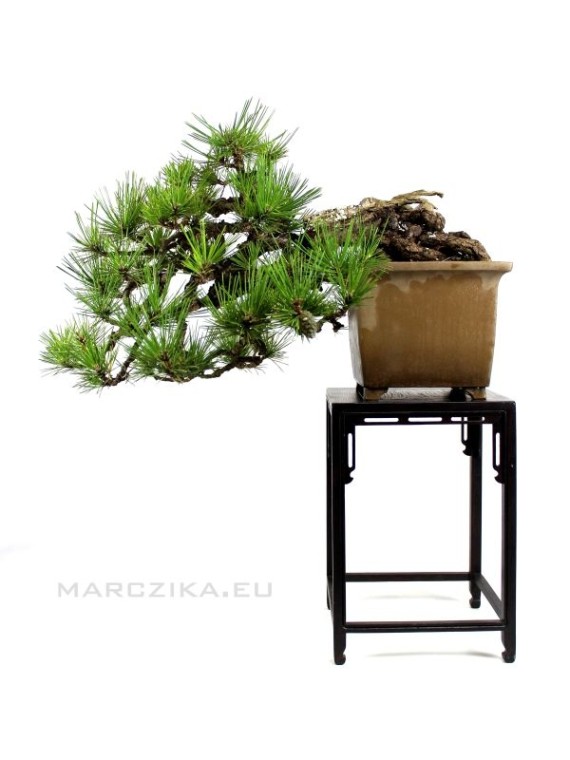Pinus thunbergii - Japanese black pine bonsai
Item number: 13126
Status: In stock
Pinus thunbergii, which belongs to the genus Pinus, is commonly known as Japanese black pine. Black pine is characterized by delicate needle-like green leaves that always grow in pairs. In the spring, the Japanese black pine produces small reddish flowers and later grows small brown cones as well. Black pine is one of the most hardy bonsai tree ...
- Genus:
- Pinus
Pinus thunbergii, which belongs to the genus Pinus, is commonly known as Japanese black pine. Black pine is characterized by delicate needle-like green leaves that always grow in pairs. In the spring, the Japanese black pine produces small reddish flowers and later grows small brown cones as well. Black pine is one of the most hardy bonsai tree species because it can withstand almost any relentless environment. It has an irregularly shaped gray bark that turns black as the tree ages. Japanese black pines live in full sun and high temperatures, but the roots may be burnt in bonsai pots. Therefore, it is advisable to protect the pot from the hot summer sun. The color of the leaves is lighter green if the tree is grown in a sunny place, but deep green if it is grown in half or in full shade. The plant tolerates mild drought well, although it is better to keep Japanese black pine slightly moist. Excellent drainage should be provided to minimize the possibility of root rot, so Kiryuzuna+Akadama+Pumice with a little bit active coal planting medium is recommended. The Japanese black pine has an unusual not demand for fertilization. Nevertheless, the use of BioGold or a similar nutrient-rich preparation (e.g., fish emulsion) between mid-spring and early autumn is evaluated as a bonsai. Significant pruning of the tree must be carried out between late-fall and early-winter so as to prevent or minimize sap bleeding. After cutting, apply putty cut paste for open wounds. Black pine bonsai become stressful due to pruning, so it is necessary to keep them in the shade for a month after pruning.
Price is does not include the bonsai table.














